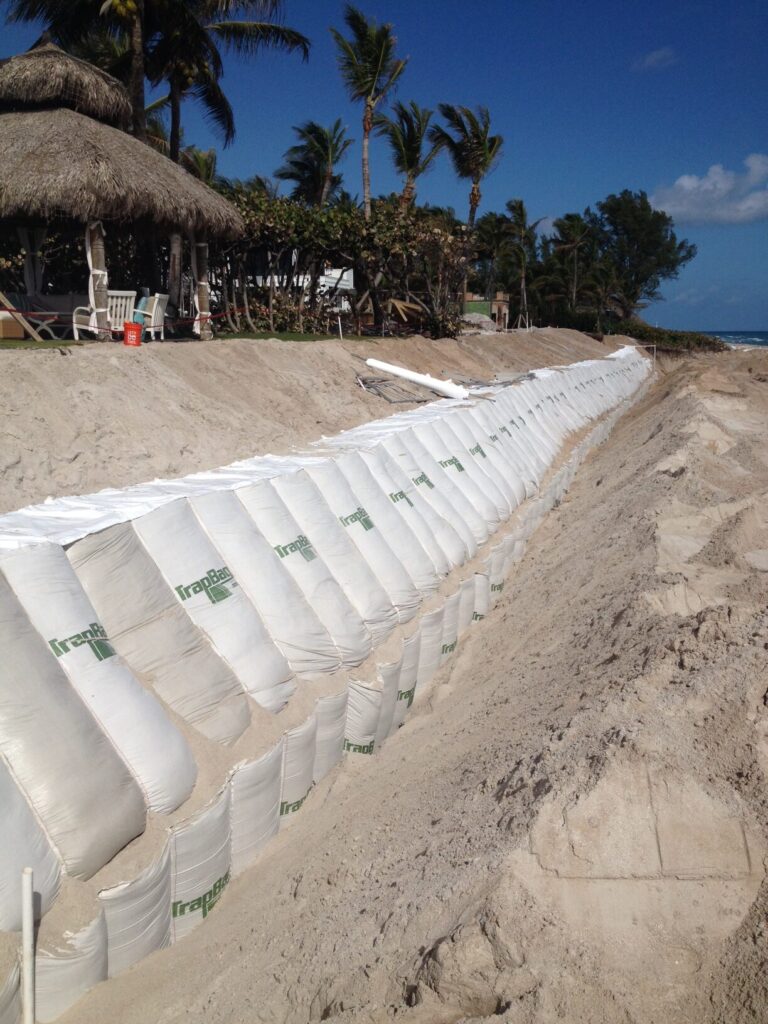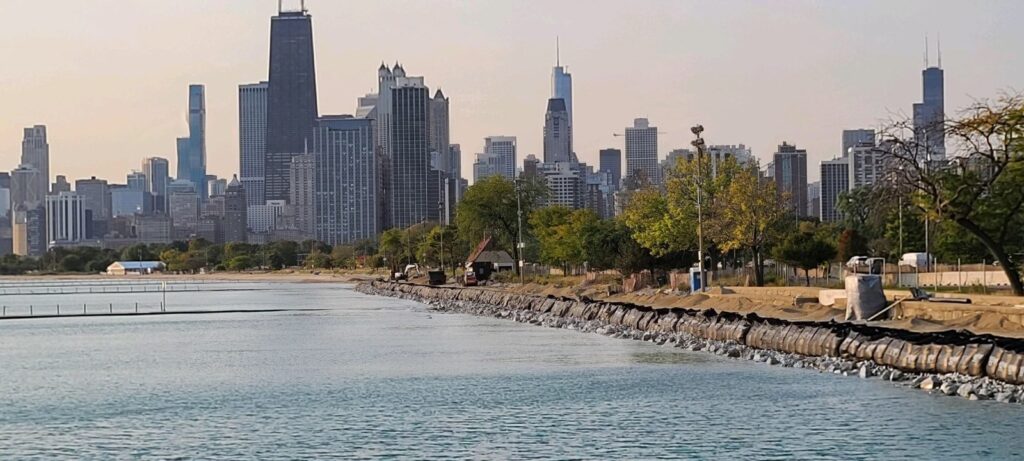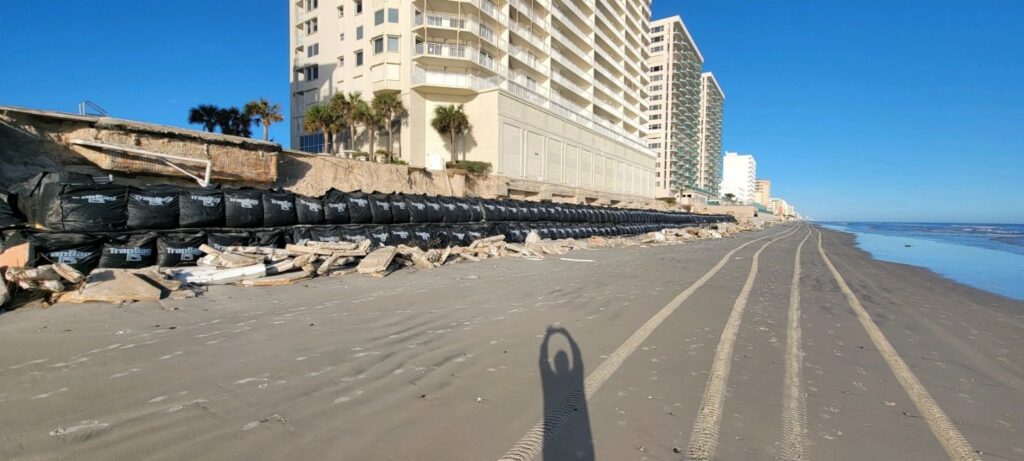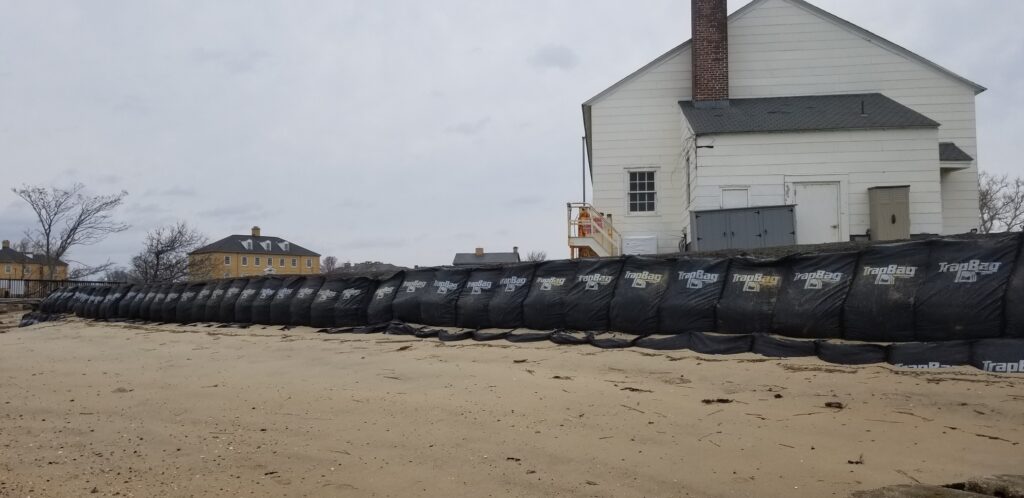How TrapBag Is Used as a Shoreline Protection Method
TrapBag is the top choice for marine service providers because it can withstand some of the heaviest hits nature can dish out while still being affordable and easy to assemble. It’s a trusted tool for everything from emergency management agencies to civil engineering firms. No matter when or where you need it most, TrapBags are there to help.
These are some of the ways marine services use TrapBags to protect shorelines and the marine structures they construct.
Erosion Control
Coastal erosion causes roughly $500 million worth of damage to properties each year. Since most marine service facilities operate near or on the water, this leaves them vulnerable to damage from beach erosion, high tides, and forceful waves—along with their customers.
Other types of seawalls and water protection barriers are expensive to install and maintain, and they can cause damage to other parts of the coastline. As a shoreline protection product, TrapBag is faster, more cost-effective, and less labor-intensive to install compared to concrete seawalls or sandbag structures.
Marine services can use TrapBag barriers as a shoreline erosion protection tool. These barriers reduce the impacts of wave action on shorelines and prevent beaches and shoreside cliffs from washing away during periods of storms or continuous rough waves.
Learn More »Marine Construction
Marine services need to be able to control water levels when they are constructing or repairing structures such as marinas, docks, and piers. TrapBags can be used to create all sorts of water barriers, including temporary dams and levees to allow crews to handle construction on dry ground.
TrapBags can also be used to create temporary and cost-effective cofferdams, retaining walls, and other structures to aid in the construction process. They can help marine service companies save time and money, especially since they don’t require ground infiltration to keep water out of your underwater construction site.
In addition, TrapBags can also be used to create a temporary drydock for boat and ship repairs with ease.
Learn More »Hurricane Protection
Hurricanes can be disastrous for multiple reasons, not the least of which is their ability to create devastating storm surges and massive waves. These waves, in turn, can damage marine structures like docks or piers and wash them away.
TrapBag barriers were originally designed to withstand the forces of a hurricane. Marine services can use them to reinforce shorelines, protect towns from storm surge damage, or redirect water during the worst the hurricane has to offer. In turn, this can protect property, prevent further damage, and save lives.
Learn More »TrapBag Solutions to Shoreline Flooding & Erosion
TrapBag is a rapid-deploy flood barrier that has been trusted as a dependable barrier in dozens of different applications for years. Here’s why so many agencies, organizations, and businesses have come to rely on TrapBag for flood and erosion control:
-
Ease of assembly: It takes dozens of people hours and hours to build a traditional sandbag barrier for a dock or marina. However, a team of two people and a third person operating a skid steer or other heavy equipment can assemble a TrapBag barrier within a few hours.
-
Reduced material: Compared to a sandbag barrier of the same size, TrapBag uses 40% less material. A single 100-foot TrapBag barrier replaces roughly 8,000 sandbags to fill the same space.
-
Better durability: Traditional water barriers have a higher margin of error during the building process and can be far more expensive. However, TrapBag barriers can hold back thousands of gallons of water or mud and stand strong through any project, including major hurricanes.
Why Choose TrapBags for Marine Services?

-

Versatility
Whether you need to make a quick cofferdam or a temporary dam for your marine work, TrapBag barriers can help you keep water away from where you do business. These barriers are resilient and durable enough to protect property and lives from mudslides, so it’s an ideal choice for keeping your site dry when you need it.
-

Speed
Keeping up with project timelines is essential for marine service providers. Therefore, being able to assemble water barriers quickly is vital for reducing delays and keeping up with the project timeline. TrapBag can be assembled in a fraction of the time required to assemble traditional sandbag barriers or cofferdams.
A crew of three people and an excavator or skid steer can quickly assemble a TrapBag barrier. For comparison, building the same-sized barrier with sandbags or water-based flood bags often requires multiple days and dozens of people filling them by hand.
-

Reliability
Land-based and marine construction crews have trusted TrapBag to keep water either in or out of their project sites. TrapBag barriers have a 3:1 (mass to hydraulic load) safety factor that enables them to keep thousands of gallons of water out of your work site.
The U.S. Army Corps of Engineers has successfully tested TrapBag for its ability to keep water away from vulnerable areas. It can meet any water diversion requirement you have for practically any emergtion.



